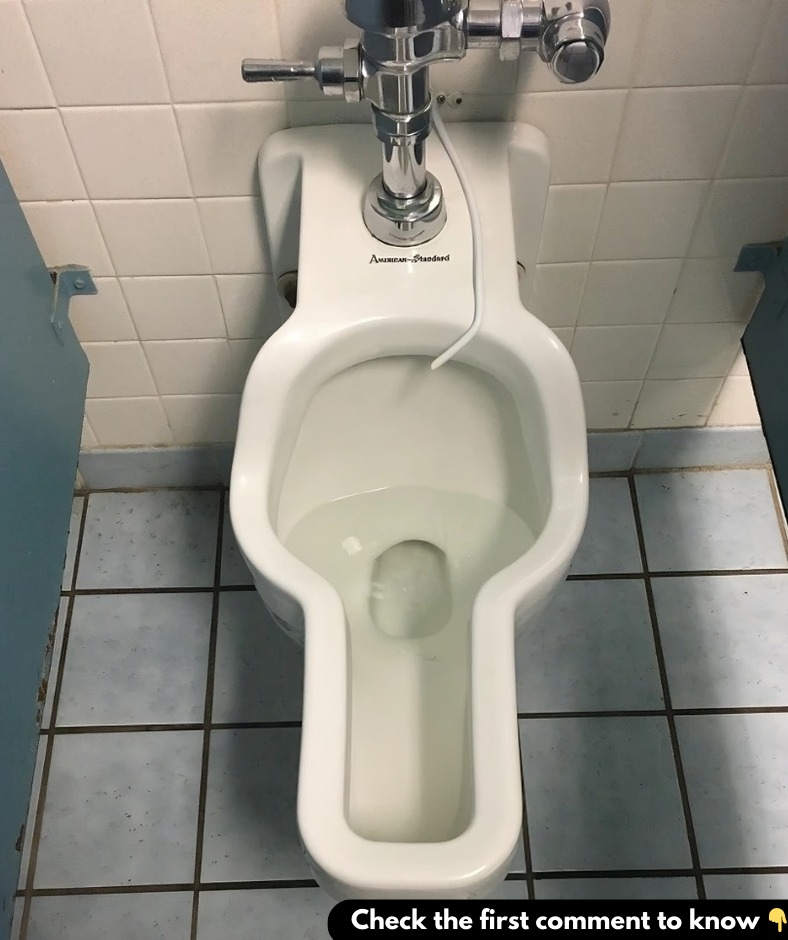When it comes to public restrooms, design innovations often go unnoticed—until something out of the ordinary catches our attention. Recently, a unique toilet design in the women’s restroom at the Huntsville Space Center has puzzled many visitors. This unusual fixture has sparked curiosity, leaving people wondering about its purpose. The answer? It’s a women’s urinal—a practical solution aimed at improving public restroom hygiene and efficiency. But what exactly is a women’s urinal, and why is it becoming more common in public spaces? Let’s explore.

What Is a Women’s Urinal and Why Does It Exist?
A women’s urinal is designed specifically for women to use in a standing or semi-crouched position, offering an alternative to the traditional sit-down toilet. This design aims to address common concerns about using public restrooms, such as the discomfort and potential unsanitary conditions of sitting on a shared toilet seat. By allowing women to urinate without sitting down, these urinals help reduce direct contact with potentially germ-laden surfaces, enhancing hygiene and comfort.
The concept might seem unusual to those unfamiliar with it, but the idea behind women’s urinals is both practical and efficient. They provide a more sanitary option for women who prefer not to use traditional toilets in public settings. Additionally, they are designed to streamline restroom use, making them especially beneficial in busy, high-traffic areas like the Huntsville Space Center.
A Brief History: The Origins of Women’s Urinals
While women’s urinals may seem like a modern innovation, they’re not entirely new. The concept has been around for decades, with early designs appearing in various parts of Europe. Countries like Germany and the Netherlands have been ahead of the curve, installing these fixtures in public spaces to promote quicker restroom use and minimize contact with shared surfaces.
The original goal of these designs was to improve hygiene while also speeding up the flow of restroom traffic. By providing an option that doesn’t require sitting, women’s urinals can significantly cut down on the time spent in restrooms, reducing queues and making the experience more efficient for everyone involved.
How Do Women’s Urinals Work?
Women’s urinals are distinct from traditional toilets in both design and functionality. Unlike standard toilets that require sitting, these urinals are used in a standing or slightly crouched position, which allows users to avoid contact with the seat. Here’s how they work:
- Positioning and Ease of Use: The unique shape of the urinal guides users to stand at an angle, making it easy to use while preventing spills and discomfort.
- Hands-Free Approach: Many women’s urinals are designed to be hands-free, allowing users to maintain hygiene without needing to touch the fixture.
- Enhanced Hygiene: By eliminating the need to sit down, these urinals minimize the risk of germ transmission, especially in busy public restrooms.
The design of women’s urinals focuses on both efficiency and cleanliness, making them an ideal choice for spaces that prioritize hygiene.
Benefits of Women’s Urinals: Cleanliness, Efficiency, and Sustainability
Women’s urinals offer several benefits, particularly in environments with heavy foot traffic like the Huntsville Space Center:
- Improved Hygiene: One of the biggest advantages is the reduced contact with shared surfaces, which many people find unsanitary. This feature is especially appealing in public restrooms, where cleanliness is a top concern.
- Faster Turnover: By allowing quicker restroom use, these urinals help reduce waiting times, which can be a game-changer in places with large crowds. Women can use these fixtures quickly and efficiently, freeing up space for other users.
- Eco-Friendly Design: Many women’s urinals are designed to use less water than traditional toilets, making them a sustainable option for eco-conscious facilities. The reduced water usage aligns with modern efforts to conserve resources.
Overcoming the Learning Curve: Helping Users Adapt
Despite their benefits, women’s urinals can be confusing for first-time users. Since traditional restroom setups have remained mostly unchanged for decades, encountering a new fixture can be intimidating. However, facilities that install these urinals often include clear instructions to help users get comfortable.
The initial hesitation is understandable—most women have never encountered this type of fixture before. But once they understand how to use it, many find it to be a convenient and cleaner option, especially in busy public spaces. Providing educational signage and clear guidance is key to helping people adapt to this innovative restroom feature.
Why Places Like Huntsville Space Center Are Adopting Women’s Urinals
High-traffic locations like the Huntsville Space Center, which sees thousands of visitors daily, are ideal settings for innovative restroom solutions. By installing women’s urinals, these facilities can manage restroom flow more efficiently, ensuring that visitors have a cleaner and quicker restroom experience. The reduced waiting times are particularly beneficial during peak hours, helping to improve overall visitor satisfaction.
Beyond convenience, the installation of women’s urinals also aligns with a broader focus on public health. With increased awareness of hygiene, especially after recent global health concerns, providing a contact-free restroom option demonstrates a commitment to visitor safety and comfort.
Breaking the Stigma: Normalizing the Use of Women’s Urinals
Although women’s urinals are still relatively uncommon in many parts of the world, they are gradually gaining acceptance as a practical solution for public restrooms. The key to their success is normalizing their use and educating the public on their benefits. As more people encounter these fixtures and recognize their advantages, women’s urinals could become a standard feature in modern restroom design.
Breaking the stigma involves understanding that these fixtures are not just a novelty but a step towards more inclusive and efficient restroom solutions. As public spaces continue to innovate, embracing designs that enhance both hygiene and user experience will be essential.
The Future of Restroom Design: Moving Towards Practical Innovation
The introduction of women’s urinals is just one example of how public restroom design is evolving. As the demand for cleanliness, comfort, and efficiency increases, we can expect to see more innovations in restroom fixtures. Future designs will likely focus on sustainability, accessibility, and hygiene, reflecting a more thoughtful approach to shared spaces.
Conclusion
The unusual toilet spotted in the Huntsville Space Center’s women’s restroom is, in fact, a women’s urinal designed for standing use. This innovative fixture offers a hygienic, efficient alternative to traditional toilets, especially in high-traffic areas. By reducing contact with shared surfaces, women’s urinals are helping to shape the future of public restrooms, making them cleaner and more user-friendly. As these designs become more common, they reflect a shift towards smarter, more inclusive restroom solutions. So, the next time you encounter an unusual restroom fixture, remember—there’s often a well-thought-out purpose behind it, paving the way for a more comfortable and efficient public experience.





